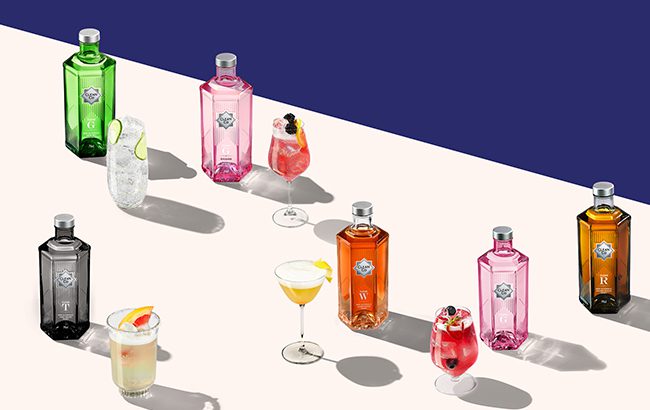Alcohol-free ‘spirits’ soar by 38% in UK
Non-alcoholic ‘spirits’ volume climbed by 38% in the UK last year, with agave alternatives more than doubling, according to new data.

New findings from IWSR Drinks Market Analysis revealed that the UK no- and low-alcohol category rose by 9% in 2022. The sector is predicted to grow by a compound annual growth rate (CAGR) of 7% between 2022 and 2026.
“The UK is one of the most dynamic no/low markets, with new product launches continuing apace and growth forecasts outstripping many other countries,” said Susie Goldspink, head of no- and low-alcohol, IWSR Drinks Market Analysis.
“While most no/low innovation continues to come from smaller players, no-alcohol variants from established brands are helping to build sector credibility.”
The IWSR said the ‘fast-moving nature’ of the alcohol-free category is ‘epitomised’ by non-alcoholic ‘spirits’ and apéritifs, as well as zero-ABV agave products.
Goldspink added: “Full-strength Tequila/agave sales have been riding the crest of a wave, and no-alcohol interpretations are appearing as an antidote to the crowded no-alcohol ‘gin’ and botanical ‘spirits’ segment. No-alcohol agave volumes in the UK have more than doubled in the last year.”
Beer continues to dominate the UK no/low market, and commands majority share of the no/low space by both volume and value, the IWSR said. The sector grew by 8% last year and is predicted to increase by 7% (CAGR 2022-2026) in volume.
Alcohol-free overtakes low-alcohol
The IWSR noted that no-alcohol overtook low-alcohol in 2022 with a volume share of 51%, with zero-ABV volumes climbing by 23% between 2018 and 2021, and by 16% in 2022 alone.
By contrast, low-alcohol volumes were stagnant between 2018 and 2021 but saw a small increase in 2022.
The IWSR forecasts alcohol-free volume growth of 10% between 2022 and 2026, compared to a 3% rise for low-alcohol.
“Low-alcohol products have more of a historical legacy presence in the UK,” Goldspink explained. “Overall volumes have changed little in recent years, and only modest growth is expected in this segment during the forecast period.
“This is compounded by the tendency of consumers to abstain from alcohol on certain occasions or altogether, with 54% of consumers taking this approach.
“No-alcohol products – particularly those with a more premium positioning – have almost single-handedly driven market expansion over the past five years, finally overtaking low-alcohol in 2022.
“With the bulk of product innovation and consumer demand focused in this area, further healthy growth is predicted in the years ahead.”
In terms of consumers’ drinking habits, soft drinks remain the top choice for alcohol moderation, while a third selected a non-alcoholic beverage. The IWSR believes this presents an ‘opportunity for further development of the category’.
No-and-low products are also popular with young adults at festivals and outdoor events.
Half of the UK adult population bought a no/low product during 2022, according to the IWSR.
The IWSR highlighted physical stores as a ‘vital channel’ for the no- and low-alcohol sector in the UK, accounting for 85% and 73% of volumes respectively in 2022. Online sales take a share of around 10% for the category.
“The brick-and-mortar off-trade dominates UK no- and low-alcohol sales, but with facings at a premium, securing and maintaining product listings can be challenging, even for the big players,” Goldspink added.
“E-commerce will therefore remain a growth channel, both in omnichannel and no/low specialists.”
The value of the no- and low-alcohol category in 2022 surpassed US$11 billion in 10 key markets, according to IWSR.
Related news
‘First’ RTD Pisco Sour launches in UK
